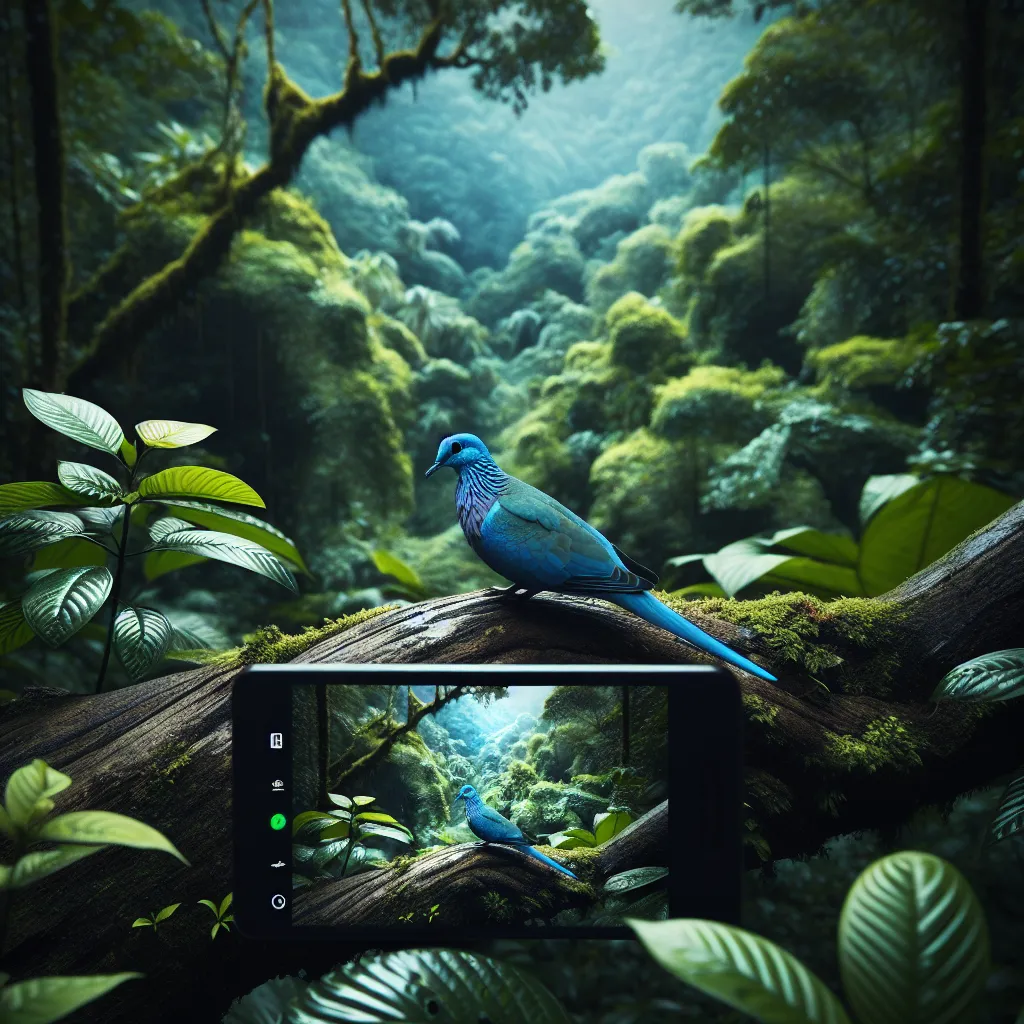When you think of doves, your mind might drift to the serene cooing sounds or the symbol of peace. But what if I told you there’s a dove that breaks the mold with its vibrant colors and ground-loving habits? The blue ground dove is a delightful surprise in the avian world—a species that defies the typical dove expectations with its striking appearance and unique lifestyle.

The Blue Ground Dove: A Tropical Treasure
The blue ground dove, scientifically known as Claravis pretiosa, is a small tropical bird found across a wide range of habitats in Central and South America. From the lush forests of southeastern Mexico to the vibrant landscapes of Trinidad, this bird makes its presence known with a flash of blue or brown as it flits through the canopy.
Habitat and Nesting
These doves are most at home in open woodlands, forest edges, and clearings. Unlike their arboreal cousins, blue ground doves prefer to forage on the ground, often seen pecking at seeds and small insects. Their nesting habits are equally intriguing. They construct flimsy dish nests of twigs, perched 1–11 meters above ground in trees, where they lay two pristine white eggs.
Physical Characteristics: A Study in Contrasts
The blue ground dove is a study in contrasts, with males and females exhibiting different color palettes.
-
Male Doves: Dressed in blue-grey upperparts and paler underparts, males of this species sport a unique black-spotted wing pattern. Their vibrant red or yellow eyes are framed by a green eyering, adding a touch of exotic allure.
-
Female Doves: Females, on the other hand, have a more subdued appearance with grey-brown heads, necks, and breasts. Their ruddy brown backs and chestnut rump add a warm hue that distinguishes them from their male counterparts.
Comparison Table: Male vs. Female Blue Ground Dove
| Trait | Male | Female |
|---|---|---|
| Upperparts | Blue-grey | Grey-brown |
| Underparts | Paler grey | Pale blue-grey |
| Wing Spots | Black | Chestnut-brown |
| Eye Color | Red or yellow with green eyering | Red or yellow with green eyering |
| Back Color | Blue-grey | Ruddy brown |
Behavior and Diet: Grounded in Nature
In their natural habitat, blue ground doves are usually solitary, but pairs or small groups are not uncommon. They maintain a diet primarily of seeds, supplemented by small insects and grit. Their feeding habits keep them close to the ground, a characteristic that sets them apart from other doves.
The Song of the Blue Ground Dove
Perched high in the treetops, male blue ground doves announce their territory with a loud, resonant “boop.” This distinctive call echoes through their forest homes, adding to the rich tapestry of sounds in their tropical environments.
Conservation Status and Taxonomy
The blue ground dove is currently classified as “Least Concern” by the IUCN, indicating a stable population across its range. The genus Claravis, to which it belongs, underwent taxonomic revisions, highlighting the complexity and diversity within this group of ground-dwelling doves.
A Final Thought on the Blue Ground Dove
The blue ground dove is more than just a pretty bird; it’s a symbol of the rich biodiversity that thrives in the tropics. Its vibrant colors and unique behaviors remind us of nature’s endless creativity. Whether you’re a seasoned birdwatcher or a curious novice, encountering the blue ground dove is a memorable experience that deepens our appreciation for avian life.
Experience Real Estate with AnySqft
Harnessing the power of AI, AnySqft simplifies the complexities of real estate transactions, offering a seamless experience in renting, buying, and selling properties across the UAE. Whether you’re seeking a rental or looking to invest, AnySqft’s AI-driven platform ensures you get the insights and guidance needed for every property journey.
Blue Ground
The blue ground dove (Claravis pretiosa) is a small, striking bird found in tropical regions from southeastern Mexico to northern Argentina.
Key Features:
- Appearance: Males boast vibrant blue-grey feathers, while females have subtle brown hues.
- Habitat: Prefers open woodlands and forest edges.
- Diet: Primarily feeds on seeds and small insects.
Conservation Status:
- Classified as Least Concern by the IUCN, indicating stable populations.
For those interested in real estate, AnySqft offers a seamless platform for renting, buying, or selling properties across the UAE. Explore your options today at AnySqft!